Kristen Lamb's Blog, page 42
April 29, 2016
How Strong is Your Dialogue? How to Fix Common Dialogue Problems
For my regular peeps, you probably know about my favorite hostage guest contributor, blogger Alex Limberg. Today, he shines his spotlight at some basic dialogue problems we all know in one form or another.
Dialogue is one of the most powerful tools for storytelling. Dialogue is the difference between a cast of talking heads versus characters so real they are more alive to us than even people we know. Dialogue is the engine of plot, and coolest thing is?
We can mess with the reader’s emotions more than that crush in high school. But, though it seems so simple to use? It’s far from it.
So without further ado…take it away, Alex!
***
Here is the crazy thing about dialogue: It’s just pure, blunt, in-your-face words. With dialogue, there is no filter in between your characters and the reader.
When you describe an action, a setting or what your character thinks or feels, you, the author, are in the role of the messenger. You convey what is happening to the reader with your own words. Everything the reader senses, she senses through you.
But with dialogue, it’s very different.
When in your story little Bobby asks: “What’s bigger, the world or everything?” the reader will read exactly that phrase, “What’s bigger, the world or everything?” It’s like Bobby is talking right next to your reader’s ear, and you, the wicked author, are sitting in another place far away.
That straight-on nature makes it so hard to make dialogue lines sound good (well, it’s hard to make anything sound good in fiction writing, okay, okay, but mind you, this post is about dialogue…).
With dialogue, there is no place to hide.
No dense jungle of overgrowing language to cover you.
No big, solid rock of a character to overshadow your clumsiness.
No flashy action from another direction to distract the reader.
Nothing but the reader watching your dialogue like a hawk, coming down on your soft words mercilessly with his sharp peak, ripping your writer’s confidence apart… Ok, I’m getting carried away here, but you get the picture!
Especially when you start out, your dialogue will often sound clumsy. But it doesn’t have to be. Here are four basic mistakes almost everybody makes in the beginning stages of their writing – and how to avoid them and make your dialogue sound really smooth.
Just take care of these four things, and you have come a long, long way towards interesting and real dialogue.
And because I know dialogue flaws are often hard to detect for the writer himself, you can download a free goodie here to check your dialogue. It uses test questions, and you can also use it to make all other parts of your story tight and exciting.
1. All of the Characters Sound Like You
Newbie writers often let their characters talk however the sentences pop up in their, the writer’s, head. They don’t filter the dialogue lines through the character’s unique personality. Of course, all of the figures now talk like the writer himself.
With a little practice, that’s quite easy to avoid.
Think about who your characters are, one by one: What’s his age and sex? How did she grow up? What are his values? What’s her temper? What’s his personality?
When you really get into your characters’ heads, you will see that every single one of them demands totally different talk. They all use different vocabulary, different length of sentences, different power of expression, etc…
Mild-mannered Lady Bumblebee, who grew up on a castle, might say: “Would you be so kind as to give me notice for how much longer we have to ascend this questionable mountain?” Whereas hands-on lumberjack Burt, straight out of the woods, might say: “Damn! No end to that $%&* slope!”
Avoid making all the characters talk like you do.
2. The Dialogue is Filled with Commonplaces
Nobody reads fiction to see trivial phrases. In real life, a good part of what we speak consists of salutations, compliments, good wishes and other formulas. But in fiction, that’s annoying and a bore. Can you imagine how your audience would feel reading a scene beginning like this:
“Good morning, dear!” – “Good morning, darling!” – “Did you sleep well?” – “Yes, and you?”
They would feel bored, really bored.
In screenwriting, there is a rule that says “Get into the scene at the latest possible moment and out at the earliest possible moment.” In fiction, that rule is not so strict, because fiction readers can handle a pace that’s a bit slower. But keep in mind that you should always have a reason for every sentence you write.

Superfluous words in a good story are like too much fat on a delicious steak – nobody needs it.
So what can you do?
Your first option is to just cut the formulas, nobody will miss them.
Your second option is to pack them into interesting, plot-driven dialogue, so they will seem like a natural byproduct and readers won’t notice. Take a look:
“Good morning, dear! Have you seen Georgie?”
“Oh my god, he should have been sitting on his high chair. Maybe he has sneaked outside, I’m gonna run and catch him. Good morning, darling!” [kisses him on cheek]
Avoid boring your readers with trivialities.
3. Your Characters Speak Logically, Not Emotionally
If the characters in your story always reply exactly “on point” to what the other one just said, your dialogue will feel very constructed.
In the real world, us humans talk first and foremost from our emotions. Our answers are often just emotional reactions deeply colored by our personalities; they are not precise, to the point replies.
Imagine one part of a couple asking the other one to go walk the dog. A logical reply would be something like: ”It’s your turn today, honey; I did it yesterday.”
But let’s make that character answer according to her feelings. She would say something like: “Why is it always me who has to walk the dog?” (annoyance) “Always the same old story!” (anger) or “And you want me to pick up the slippers for you too?” (with a slight grin; annoyed amusement)
You can make your dialogue vivid and realistic by letting your characters talk after their feelings, not after logic.
Avoid too “correct” and stilted dialogue.
4. Boring. Boring. Boring. Your Dialogue is Just Boring.
Even if all the characters have their unique voices, your dialogue will also have to follow its primary purpose: To entertain!
Maybe you and your characters are just reciting the program of the plot too mechanically. Maybe there are no quirks, no detours, no fun, no suspense.
How can you solve this problem and inject something interesting?
For one, make sure your characters fully show off their personalities. The more they express their thoughts and feelings, the more material you will have to insert interesting bits of “dialogue within the dialogue.”
You can keep your dialogue juicy by introducing little “side topics.” Say the scene is about a guy buying a gun. Within the dialogue between him and the shop assistant, he gets sidetracked and enthusiastically depicts his new pink whirlpool to the assistant.
Remember, small detours can be entertaining, but they have to add something, be it suspense or fun. And they have to stay small and not take over the dialogue.
Avoid dull conversation in your scene.
Wow Your Reader With Intriguing Dialogue
You can often see these four typical mistakes in dialogues. With a little practice and a watchful eye though, you will eliminate them from your writing forever and craft dialogues so thrilling and authentic, your reader will swallow them like cotton candy.
Your characters will take on a life of their own and your audience will be swept away by their struggles and will just have to keep on turning the pages.
Alex Limberg is blogging on ‘Ride the Pen’ to help you boost your fiction writing. His blog dissects famous authors (works, not bodies). Write gripping dialogue with his free ebook “44 Key Questions” to test your story (contains a to-the-point checklist to test every aspect of your story). Shakespeare is jealous. Alex has worked as a copywriter and on movies. He has lived in Vienna, Los Angeles, Madrid and Hamburg.
So what do you have to say to all of this?
Which character was the most difficult to get to talk for you so far? When your characters open their mouths, is it a pleasant experience? Do they dare to copy each other’s dialogue? Do they have the right to remain silent? Will you use anything they say or do against them in a court of law? If they can’t afford an attorney, will one be appointed to them? Do they have good breath?
I love hearing from you!
Let’s get a dialogue going… ha!
To prove it and show my love, for the month of APRIL, everyone who leaves a comment I will put your name in a hat. If you comment and link back to my blog on your blog, you get your name in the hat twice. What do you win? The unvarnished truth from yours truly. I will pick a winner once a month and it will be a critique of the first 20 pages of your novel.
ANNOUNCEMENT!
Making Money with FREE is tomorrow and there is still time to sign up. Our job as authors is tougher than ever, but I have a class to help with the business side of the business. I will be teaching about the most common mistakes writers use with FREE and teach how to use FREE for advantage.
As a BONUS, my friend Jack Patterson who’s sold over 150,000 books in less then four years is going to also teach how to rock a newsletter, how to tame Amazon and all kinds of other author insights into the toughest question we have…. HOW do I sell MORE BOOKS?
All WANA classes are recorded and the recording is free. The class is easy, convenient and from home and if you miss? We gotcha covered with the recording. So I hope to see y’all there!


April 27, 2016
Writing Career Stuck? Sales Mired? How to Get Your MOJO Back!
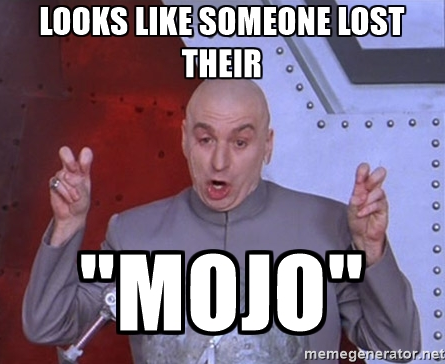
Last time we all commiserated about feeling stuck. Lately, it’s been really bizarre. I’ve been at this writing thing since long before self-pub, but recently the feeling of author despondency seems to be heavy…everywhere. Maybe it’s the vastness of the internet, the fact that all the old ways and old rules are gone. Sales are stuck. We are stuck. We have this general feeling of anxiety and I do feel it’s worse now than ever.
So no, you were NOT imagining it.
Stuck happens, especially for those who choose to go pro. See, success in anything is not this straight line that shoots at a perfect angle ever upwards. It is fraught with setbacks. Some we can control, some we can’t.

But as I said last post, the most critical step is to admit we have a problem lest we give up and OD on brownie batter and Game of Thrones.
What Do We Do?
The next step is to see exactly what kind of problem(s) we are having.
If we don’t stop and assess what precisely might be going sideways, we’re just going to sink ever deeper into despair because the right brain is terrible at planning. The right brain tells us we aren’t selling books because we are a fake, that our thighs are chubby and that ice cream solves all that ails us.
Right brain is a bit of a drama queen.
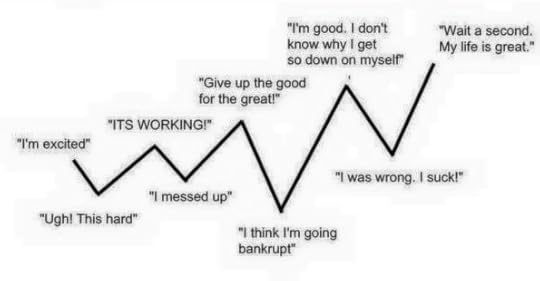
Typical day as a writer…
Left brain is better at problem-solving.
What If My Career Is Going Nowhere?
I always like to begin by looking at the actual product for sale. The writing is where we exercise the most control and why waste energy fixing marketing if the product needs help?
Good marketing sells good books faster.
It’s science
April 25, 2016
Author Despair—What To Do When You Feel Like All Is Lost

Image courtesy of Eflon via Flickr Creative Commons
We have all heard the saying, The truth shall set you free. But what many people may not realize is the truth doesn’t set us free from others. It sets us free from ourselves.
Like our characters, we are often blinded by our own lies and since we aren’t facing the truth and admitting it, we can make no forward progress. Growth, change, and victory are all impossible.
This said, there are some dark places all writers go, but since we are ashamed to feel these things, we rarely fess up to feeling them and so they remain in the dark. Thus we remain in the dark and sink ever deeper.
It reminds me of that scene from The Neverending Story. We can become like Artax the horse—admit you cried TOO
April 22, 2016
How to Make Boring Story Parts Exciting
Image by DonkeyHotey/Flickr CC
This is another guest post by blogger and copywriter Alex Limberg. If you have followed my blog in the last couple of months, you have probably come across him, namely because the Stockholm’s Syndrome sets in faster when you drug the candy
April 15, 2016
Can’t Keep Up? 7 Brilliant Ways To Finish Your Story

Image via Flickr Creative Commons courtesy of Pedro Travassos
Today we have a special treat from Dr John Yeoman, PhD Creative Writing. He’s going to give us some ways to tackle one of the biggest problems plaguing writers—the inability to finish what we start.
*gets popcorn*
Take it away, John!
***
Do you live in a world of unfinished stories? Across the year, you’ve jotted scraps here and there, stuck an opening scene beneath a flowerpot, a closing line in a shopping list and a great cameo incident… well, you’ve forgotten where it is now but it was awesome.
Join the Club of Interrupted Scribes

Image via Drew Coffman courtesy of Flickr Creative Commons
You’re not alone.
We all know what happened when Coleridge was interrupted, when finishing Kubla Khan, by ‘a person from Porlock’. All that remains of his epic is an unfinished scrap.
More fragments, abandoned by great authors, have been found – centuries later – in laundry baskets, croquet boxes and golf bags than you’d believe. Or so Prof. K. K. Ruthven tells us in Faking Literature (2001). Maybe Shakespeare’s lost play Cardenio will one day be discovered beneath Donald Trump’s hair?
Improbable, yes. But so is Donald Trump.
Lost bits, found by chance, are the history of literature.
Joyce’s Ulysses consists merely of out-takes from other people’s work that he salvaged from the jakes of Dublin pubs. (Read Ulysses and see if you don’t agree.)
Seriously, have you written a dozen fine stories – almost ready to go – that you haven’t quite finished?
Once, that was my fate too. Bits lay everywhere, forlorn. My name was not Homer so I couldn’t rely on future savants piecing them together to create The Iliad.
Do you share my pain? If so, let me share with you my remedy. In fact, I have seven remedies.
Yeoman’s Seven Tested Ways To Get A Story Finished
ONE—Create your own scene hangers.

Image courtesy of Ed Dunens via Flickr Creative Commons
You know what scene hangers are – and page hangers, chapter hangers and book hangers. (They’re the last scenes in a novel written to cue a sequel.) Hangers are artful lines, scattered here and there, that tease the reader to read on.
But why waste those magic words upon the reader? Write them for yourself.
Take a notepad with several blank pages. Scribble, at the bottom of each page:
‘Little did I know that…’
‘But her wish was not to be granted,’
‘There was a shadow behind the curtain. And it moved.’
‘What would happen now? Tomorrow, he knew, was not going to be an easy day.’
And so on.
Don’t you just want to finish that story? Now it’s easy. Go back and fill in the spaces. Delete those clichéd lines. And, lo, you have a story.
TWO—Devise your own Scrivener program.

What’s Scrivener?
If you have to ask, you’re new to story telling. It’s a wondrous program that puts everything you need to complete a story in one convenient place on your computer screen.
Imagine a corkboard on your wall. In one corner, you’ve pinned character descriptions. In another, scene settings. Somewhere else you’ve stuck pictures, plot outlines, dramatic incidents, crumbs of dialogue… Plus links to web resources (research), videos and even music.
Some people do like to play music while they write, I’m told. Maybe Mahler for prose poetry. Rap for crime/suspense. It inspires terse. Jerky. Sentence fragments.
Now imagine that corkboard on your computer. Here’s the link to Scrivener (and, no, I don’t get a commission). Once learnt, it’s wonderful.
Problem is, Scrivener takes time to learn. Its Help manual is too technical for newbies and its built-in word processing program is, compared to Word, primitive.
Solution? Build your own Scrivener using the ‘sticky notes’ utility that may be on your computer right now.
My Windows 8 program lets me put up to 35 sticky notes on my desktop in a choice of six colours. I’ve assigned Green for settings, Pink for characters, Yellow for plot outlines, Blue for web links, and so forth. I can move them around the screen as I wish, to compile a story.
Each of my sticky notes will hold up to 6000 words. Potentially, that’s three whole novels in one place.
Graphics? You can’t put those in sticky notes. (At least, I can’t.) So do a montage of the pictures you need – say, of your key characters and scene settings – and make that montage your screen wallpaper. Every time you turn on the computer, you’ll be hurled into your novel – graphically.
Who needs Scrivener?
THREE—Try the ‘bricolage’ technique.

Image via Flickr Creative Commons courtesy of Linda Eng
‘Bricolage’ means a jumble of unrelated things, as in a patchwork quilt. Well, that’s what we’ve got already, haven’t we? Scraps of stories. So how can bricolage help us finish those stories?
Stop scribbling on paper. (Those little bits get lost.) Start writing on file cards.
Why? Cards are durable. You can keep them in your handbag or back pocket, ready to hand for whenever an idea strikes you. As soon as they bulge out of your pocket, toss them on the carpet and play solitaire.
You’ll see a plot take shape before your eyes. All you need do now is write other cards to fill in the gaps.
Just be sure to collate your card pack in the desired order – and hide the pack – before your spouse or other tidy person bustles in to sweep the carpet.
BTW: This idea works. I wrote one of my novels that way. But I had to lock my study door lest my wife fuss in with a broom.
FOUR—Write the END first.

Original Image via Flickr Creative Commons, courtesy of Anurag Agnihotri
This is a variation on the ‘scene hanger’ gambit.
Your closing and opening scenes should be the most powerful in your story, right? The closure sends your reader away happy, intent on buying your next book. The opener gets them, agreably, into the story itself.
So devise a great closing line. Expand it into a paragraph, then a scene. Then write the first paragraph of the story so that, in some way, it reflects the last one.
Instantly, you have a ‘book end’ effect. The story acquires an inner sense of unity. It’s a perceived ‘whole’, synthetic or not.
Take a look at the short stories you admire most. I wager, most of them will echo – in some way – elements of their closing theme in the first paragraph.
Those elements are ‘book ends’.
It’s a snap to finish a story when you know, at the very start, where it’s heading to and coming from.
FIVE—Dictate your story.

Image via Flikr Creative Commons courtesy of Zoetnet.
If you’re like me, you pen your first draft on file cards then type it laboriously into Word. That doubles your workload. Why not dictate your draft, from notes, straight into a voice recognition system? Then tidy it up?
You can lie back in your favourite chair with a glass of elderflower lemonade and bark to your willing slave: “Begin!”
I confess I’ve never mastered voice recognition. But I do know that a member of my story coaching program, Writers’ Village Academy, uses Dragon to create her stories. And very good they are.
I also know that Erle Stanley Gardner put out 66,000 words a week, and kept several secretaries on the go, by using a Dictaphone. And the prolific UK author Barbara Cartland would ‘write’ as many as five novels simultaneously by lying in her bath and dictating to her secretary. A willing slave.
Well, we can always dream…
SIX—Use a software program.

“Assistant” not included.
You’ll find a wealth of clever software programs on the web, many of them free, that will help you organize your work, brainstorm or mind-map. Making every component of a story visual is one step towards finishing the story.
It’s no longer an idea in your head. It’s an object. You can play games with it.
You’ll find a lot of useful programs for writers here. (But please do come back.)
The Top 55 Apps for Writers in 2016
At a pinch, you could even use Excel. Or, if you like a challenge, the internal hyperlink utility in Word. For example, you can write ‘Jim goes to the farm‘ then hyperlink ‘Jim’ and ‘farm’ to their character and setting descriptions elsewhere in the same file (or, if you really like a challenge, on the web).
The problem is, I’ve found, the more you play with software the more you play. And the darn story never does get done.
Keep it simple.
SEVEN—Don’t finish the story at all.
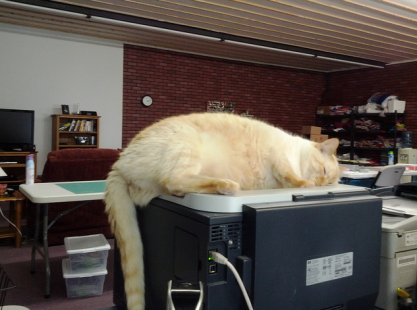
You wrote those scraps for a reason. Each had its own merits. Could any one of them yield you a flash fiction story if you tidied it up, added a start and finish, and wove in a structure?
Some of the best flash fiction stories have grown out of a simple punchline, anecdote or dialogue snippet.
Just remember the Golden Rule: even a flash fiction story needs structure.
You can read The Ultimate Guide to Writing Very Short Stories here. (But please come back.)
So you’re still haunted by bits of stories (or a bit of a story) floating around your head or home? No problem. Here is your Bonus Tip #8:
Don’t even bother to write them down.
One sign of born story tellers, like us, is that we live in our minds. We tell stories for ourselves. It’s not imperative that anybody else overhears our thoughts, or even buys our stories. If we create them for our own fun alone there’s no compulsion to finish them. Is there?
Worth a thought…
Well, I had intended to write a compelling last line for this post, to finish it conclusively, but on reflection there’s no point. I’ve had my fun.
What about you?
How do you finish the work you’ve started? What tips can you share with other writers? Share them here. And have fun!

Dr John Yeoman, PhD Creative Writing, is a top-rated Amazon novelist. He judges the Writers’ Village story competition and is a tutor in creative writing at a UK university. He has been a successful commercial author for 42 years. You can find a wealth of ideas for writing stories that succeed in his free 14-part course at Writers’ Village.
Other helpful links:
The Top 55 Apps for Writers in 2016
The Ultimate Guide to Writing Very Short Stories
Thank you, John for taking the time to help us out! Remember that comments for guests count double in my monthly contest so tell us about your unfinished bits of genius. Did you ever find a way to bring them to fruition? How did you do it? Did you use one of John’s suggested techniques or something else? Did you find an AH-HA moment today?
I LOVE hearing from you guys!
To prove it and show my love, for the month of APRIL, everyone who leaves a comment I will put your name in a hat. If you comment and link back to my blog on your blog, you get your name in the hat twice. What do you win? The unvarnished truth from yours truly. I will pick a winner once a month and it will be a critique of the first 20 pages of your novel.
Upcoming Classes!
Back by popular demand! Bullies & Baddies—Understanding the Antagonist
All fiction must have a core antagonist. The antagonist is the reason for the story problem, but the term “antagonist” can be highly confusing. Without a proper grasp of how to use antagonists, the plot can become a wandering nightmare for the author and the reader.
This class will help you understand how to create solid story problems (even those writing literary fiction) and then give you the skills to layer conflict internally and externally.
Beyond craft and to the business of our business?
How and WHY are we using FREE!?
Making Money with FREE! As a bonus for this class, my friend Jack Patterson who’s so far sold over 150,000 books to come and teach us how to ROCK the newsletter. This is in excess of two hours of training and the recording (as always) comes with purchase.
For those who need help building a platform and keeping it SIMPLE, pick up a copy of my latest social media/branding book Rise of the Machines—Human Authors in a Digital World on AMAZON, iBooks, or Nook.


April 11, 2016
Three Ways To Add the Sizzle to Fiction That’s Fizzled

Original image via Flickr Creative Commons courtesy of Sodanie Chea
I read a TON of fiction no only for pleasure, but for work. I’ve been blessed to help countless writers diagnose what’s going wrong in their fiction. The good news is that Occam’s Razor applies even to fiction that is fizzling…meaning sometimes the simplest answer is the correct one.
Often we think we need to invent a story never told, or create some mind-blowing twist-ending never before witnessed. But, while those are cool things to strive for, they aren’t necessary and can even backfire.
Truth is, there are only so many plots and if we get too weird, then readers have no basis for comparison and it’s such a mental jump that the story won’t resonate. I use my blue steak example.
Steak is wonderful and there are countless creative ways to prepare it, but if we get too weird for the sake of being different, it will make the reader lose her appetite.
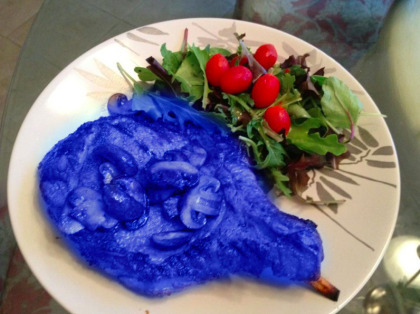
BLUE STEAK. But look how CLEVER it is! Really, it’s YUMMY.
Twist-endings can have the same effect. Recently, I read a thriller by a mega-author and the book had me positively entranced. The author had created one of the most frightening killers I’d ever seen. I am an avid fan of Discovery ID and read countless true crime works and probably own every profiling book out there. To create a killer that rattled me? Pretty big deal.
So I am inhaling this book and then the ending?
I would have tossed the book across the room, except I was listening to it on my phone and really didn’t want to buy a new phone. The author actually would have had a way better ending had he not tried to be clever. I wasn’t buying the twist and it ticked me off more than a little.
When I think of some of my favorite fiction, I think of what they do well. I dog-ear and color my books. I actively study what writers do well and when a story goes sideways, I go back and try to diagnose what went wrong where so I can learn (and pass this on to you guys).
Thus, today I want to share three simple things you can check for if you have a plot that just seems to be flatter than a week-old Coke.
There MUST Be an Active Goal
Whenever I teach my log-line class, this is one of the things I am looking for when a writer is describing his work. Getting a writer to articulate what her story is about in ONE sentence is highly useful, especially when diagnosing a problem. One of my all-time favorite plotting books is Story Engineering by Larry Brooks. Brooks breaks plots into three elements.
In Act One the protagonist is usually in the dark. Something life-altering has happened but the protagonist is kind of swinging blindly or avoiding conflict altogether (Running). Act Two, the protagonist becomes aware there is a problem and begins pushing back (Warrior). Then we have the false victory and darkest moment and then the protagonist undergoes a transformation.
Act Three is when the protagonist transforms. Anyone else would have said, “Screw it” and gone home, but the protagonist presses on to solve the core story problem (Hero).
Often when I see log-lines that involve passive goals like “avoid” or “evade” or “hide” that is only part of the story. There is an incomplete plot. No protagonist can rise to become a hero by avoidance. Any plot that simply involves a character trying to stay away from something is only partway there.
While it is completely okay to begin with a passive goal, the story cannot remain there.
The protagonist must face the life-altering force (antagonist) in order to rise to become a hero. Even in literary fiction, the protagonist must face the existential enemy and come out on top.
For instance, in The Road the enemy is man’s animal nature. When faced with imminent death which will triumph? Humanity or baseness? If the Man and Boy reach the ocean by snacking on other humans, they fail.
Unlike a genre fiction, there is no Big Boss Battle with a terrorist organization, a mad scientist, a serial killer or monster. And yes, in literary fiction the antagonist can be more of an intangible, but that doesn’t mean there is no showdown. There has to be or there is no transformation/triumph and transformation/triumph is the entire point of fiction.
Stakes/Consequences

Image via Dupo-x-y courtesy of Flickr Creative Commons.
What will happen if your protagonist fails? The bigger the stakes and the consequences, the better the story. This is true in life and more so in fiction (since fiction is the bouillon of life).
Case in Point
I’m a huge fan of horror. When the remake of Poltergeist came out I couldn’t wait for it to come to video (since I prefer watching movies at home). What really surprised me was that Poltergeist was such a cool story to remake and yet? The movie got terrible reviews. I didn’t read them because I didn’t want to be biased, but two stars?
Ouch.
So I watched the movie and yeah…it sucked. I wasn’t quite certain why so I rented the original Poltergeist to compare. Maybe I was just being biased?
No.
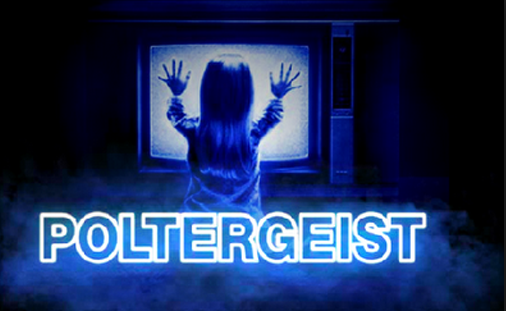
The problem with the second Poltergeist had to do with the stakes and the consequences. See, in the original, the Freeling family is living the American Dream. They have an amazing house in a new tract home development, a development that offered many luxuries to a more working class section of society.
Steve Freeling is passionate about his development and his enthusiasm shows in his sales numbers. In fact, his bosses are SO impressed that he is offered a prime spot in the next phase of building, on a hill overlooking the development where he currently resides.
Diane Freeling is a stay-at-home mom with fantastic kids and life is not only good, it is simply getting better and better.
Until the poltergeists start disrupting their lives.
The story is so disturbing simply because this is a really likable family living a dream that becomes a nightmare. When they find out their home is built on a cemetery and no one bothered moving the bodies, it is a profound violation.
Contrast this with the new-and-not-so-improved remake.
The Griffin family isn’t living a dream at all. Eric Griffin was laid off. He’s desperate and erratic. They didn’t buy a dream home, they bought the only house they could afford because they’re broke and all their credit cards are maxed out. Eric and Amy (unlike the Freelings) are already teetering on divorce in the beginning of the story.
Thus, what the poltergeists disrupt was already cracked and failing anyway. Since there was no ideal marriage, perfect family and American Dream on the line?
Meh.
To find out the crappy house you moved into only because you could afford it is built on an old cemetery is not nearly as disruptive as realizing all your hopes, dreams and future are tainted.
Plot Stakes and Personal Stakes Are Bound Together
Also remember that there are two lines of stakes—plot and character. Both act as cogs, one turning the other. The protagonist should be arcing and that personal arc is critical for confronting the problem and winning.
In Winter’s Bone there is the land that is at stake, but Rhee is also risking her personal identity. In the beginning, she is loyal to the patriarchal family structure. She keeps her head down and avoids confrontation. But the plot problem puts her in the crosshairs of choosing the larger family structure with the nuclear family. She must defy the unwritten laws of the hillbilly culture in order to save her mother and siblings.
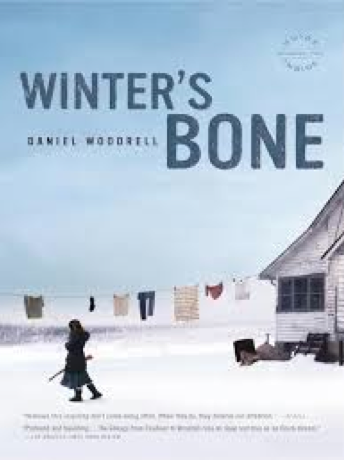
She is not only gambling her own life to find what happened to her father, she is risking the lives of her own immediate family. Her very self-identity and where she fits is on the line.
Urgency
Stakes and consequences are ultimately tethered to urgency. In genre fiction, this is a bit more straight-forward. In The Black Echo Harry Bosch must uncover who killed tunnel rat and Vietnam buddy Meadows before the second heist is completed and the killers disappear forever.
In Winter’s Bone, Ree Dolly must find proof her father is dead before the bondsman takes the family land and renders them all homeless.
Even if the antagonist is not so flesh-and-blood (I.e. addiction) there needs to be some kind of a ticking clock. The protagonist doesn’t just have forever to get sober. There is some outside pressure that gives a timeline and if the protagonist doesn’t meet the timeline, she fails.
The shorter the timeline, the greater the tension. If loan sharks tell you you have the next ten years to come up with $10,000 that sucks, but is doable. But what if they give you three days?
Combine the Three for MAX Effect

Image courtesy of Iwan Gabovich via Flickr Creative Commons.
Notice how all three of these elements dovetail into one another. In order to have stakes or a timeline, there has to be an ACTIVE goal. Then once you find that active goal, make the stakes as high as you can…then try harder. Remember that risk and reward are joined at the hip.
The more the reader is aware of what is at stake, the tighter we can wind the tension. Remember that fiction is the path of greatest resistance.
If the reader knows that Mount Doom is the destination and that Middle Earth will be plunged into darkness and despair if the Ring of Power is not destroyed…then every misstep, every mistake, every setback is enough to shred our nerves.
Additionally when you (the writer) are aware of the ultimate goal and the stakes and consequences, then it is far easier for you to generate dramatic tension instead of simply inserting bad situations.
Go over your plot and if it isn’t where you want it to be, try using these three elements as a checklist. Is the goal active? Do you only have a partially formed plot? Are the stakes high enough? Could they be bigger? Can you up the timeline and make the protagonist (and the reader) sweat?
I LOVE hearing from you guys!
To prove it and show my love, for the month of APRIL, everyone who leaves a comment I will put your name in a hat. If you comment and link back to my blog on your blog, you get your name in the hat twice. What do you win? The unvarnished truth from yours truly. I will pick a winner once a month and it will be a critique of the first 20 pages of your novel.
Upcoming Classes!
Back by popular demand! Bullies & Baddies—Understanding the Antagonist
All fiction must have a core antagonist. The antagonist is the reason for the story problem, but the term “antagonist” can be highly confusing. Without a proper grasp of how to use antagonists, the plot can become a wandering nightmare for the author and the reader.
This class will help you understand how to create solid story problems (even those writing literary fiction) and then give you the skills to layer conflict internally and externally.
Beyond craft and to the business of our business?
How and WHY are we using FREE!?
Making Money with FREE! As a bonus for this class, my friend Jack Patterson who’s so far sold over 150,000 books to come and teach us how to ROCK the newsletter. This is in excess of two hours of training and the recording (as always) comes with purchase.
For those who need help building a platform and keeping it SIMPLE, pick up a copy of my latest social media/branding book Rise of the Machines—Human Authors in a Digital World on AMAZON, iBooks, or Nook.


April 5, 2016
Real Writers Don’t Self-Publish—Part 2
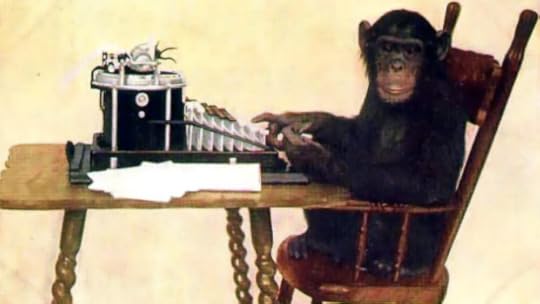
Image courtesy of Wikimedia
All righty, so last time in Real Writers Don’t Self-Publish we talked about a lot of myths that surround publishing in general and I promised to delve deeper into this subject. I hope, at the very least, y’all walked away with one core understanding about traditional publishing.
Traditional publishing measures one thing and one thing only…commercial viability.
Granted, this often means the author is professional and the writing is outstanding…but that’s isn’t always the case. Some works are published for the sole reason that they will sell a certain amount of copies (refer to Snookie’s memoir). Additionally some of the greatest works of our time are not coming to market (initially) through legacy presses (refer to The Martian).
But here’s the deal. While we certainly don’t have to be leggy-pressed to be “real” writers, self-publishing is no panacea.
The hard truth is there is a lot of junk being published. There are too many people who are so in love with the idea of calling themselves “published authors” that they take shortcuts, and I feel this is likely what irritates many professionals (especially since what this group lacks in skill and talent they tend to more than make up for in mass marketing).
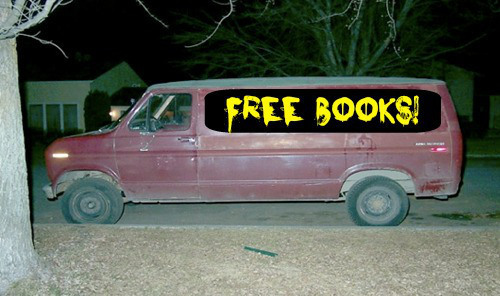
But, the dangerous idea comes when we cut off our nose to spite our face.
We are SO scared that we are going to get lumped in with the folks who, frankly, should just increase processing speed by deleting Word off their hard drives, that we sit around believing we aren’t any good unless the Legacy Gods reach down from Olympus New York and give us their blessing.
NY is not going to give you (or me) a writing career. We have to hustle. Self-publishing actually has a lot of benefits not only for writers, but for traditional publishers as well.
Really, I Mean It
In my post The Ugly Truth About Publishing I explained how the consignment model worked and how mega-stores like Borders and Barnes & Noble obliterated the bookstore landscape. We discussed the terrible consequences writers have endured because of these companies’ greed.
Borders is now a memory and, trust me, Barnes and Noble isn’t far behind. They’re succumbing to the effects of their own avarice. Having a megastore on every corner was a sound business model…until everyone began shopping on-line.
If Barnes & Noble survives (which I highly doubt because, to date, they have not listened to my advice to SAVE them
April 1, 2016
Real Writers Don’t Self-Publish

One of the things I love about doing what I do is that I have the ability to connect so closely with you guys and speak on the topics that matter to you. Yesterday, a fellow writer shared an article from The Guardian, For me traditional publishing means poverty. But self-publish? No way. She wanted my take on what the author had to say.
All right.
For those who’ve been following this blog for any amount of time, I hope I’ve been really clear that I support all paths of publishing (vanity press doesn’t count).
All forms of publishing hold advantages and disadvantages and, as a business, we are wise to consider what form of publishing is best for our writing, our work, our goals, our personality, etc. But my goal has always been to educate writers so they are making wise decisions based off data, not just personal preferences.
We don’t self-publish because all our friends are doing it and we think we can make a million dollars fast cash. But, at the same time, we shouldn’t hold out for traditional out of some misguided idea that self-publishing/indie isn’t for “real” authors and that traditional publishers are somehow going to handhold us.
The author of this article has the right to publish as she sees fit. I am all for empowering authors and trust me, I know that self-publishing gets a bad rap for good reasons. I am not blind to all the book spam and authors who write ONE book and camp on top of it for the next five years selling to anyone who looks at them.
But there were some egregious errors in many of the article’s assertions that I’d like to address so that your decision is based of reality not an opinion piece. I won’t address them all today for the sake of brevity, but here were the major ones that jumped out at me.
Myth #1—Serious Novelists Don’t Self-Publish
Tell that to Hugh Howey, Bob Mayer, Barry Eisler, Joel Eisenberg, Vicki Hinze, Theresa Ragan and y’all get the point.
Myth #2—Self-Publish and ALL Time Will Be Spent Marketing Not Writing
Or maybe they’re doing it wrong?
Myth #3—If You Self-Publish You Will Act Like an Amway Rep Crossed with a Jehovah’s Witness
Many do, but that’s a choice not an inevitability.
Myth #4—Gatekeepers Know Best
LOL. Sure. Because Snookie’s It’s A Shore Thing was published for its literary value.
Myth #5—Private Apprenticeship is Better for Author Growth
Public feedback can be brutal and isn’t for everyone, but rearranging deck chairs on the Titanic in private isn’t necessarily a better, nobler path either.
Myth #6—Awards Are Everything
For some genres, perhaps. But can the literary world keep ignoring that some of the best works of our time are not coming from legacy presses?
Myth #7—To Look Pro in Self-Publishing You Spend a Fortune
Network better.
Myth #8—Traditional Publishing Creates a Far Superior Product
Tell that to the romance authors who, for years, couldn’t expect that the cover would match their story. Pyramids on a romance set in the Highlands? It has happened.
Vonda McIntre (who is a brilliant Nebula Award Winning Author) has even posted some of the really awful covers her publisher (traditional) thought were a good idea. And, because she was a mere author and had no control over the covers? She had no say.
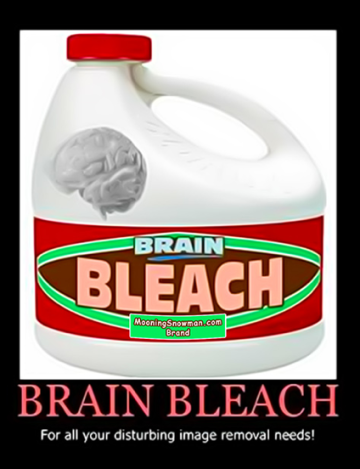
Myth #9—Self-Published Authors Can’t Make a Living
Many don’t. This job is not for everyone. But then again, most traditional authors would make more flipping burgers.
Myth #10—Amazon & Self-Publishing Have Destroyed Author Incomes
Definitely a NO. For the first time in history more authors are making a living wage than ever before. Mega-bookstores like Barnes & Noble did more to damage author incomes than almost any other factor. They almost single-handedly destroyed the bookstore ecosystem and many writers who were making a good living suddenly were forced to get a day job if they liked eating.
Refer to my post The Ugly Truth of Publishing.
Now that I pointed out the ten contentions I disagree with, I’d like to zoom in on this idea that traditional publishing is only for real writers and that self-publishing is for amateurs. Namely this quote from the article rubbed me the wrong way:
Despite royalty rates of 70%, I think self-publishing is a terrible idea for serious novelists (by which I mean, novelists who take writing seriously, and love to write).
This statement is so far off-base I need this book…
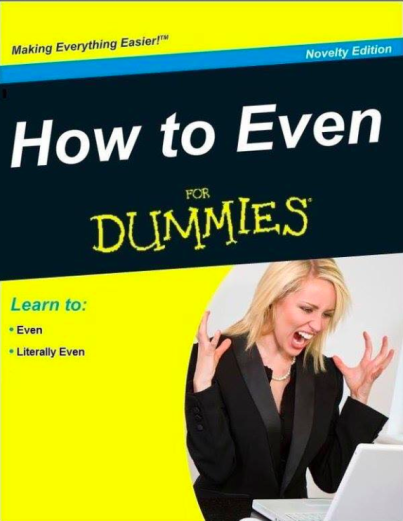
I’m back and I can “literally even” so let’s go
March 30, 2016
Trouble With Your Plot? Three Reasons to Kill Your Little Darlings

Image via Flickr Creative Commons, courtesy of Frederik Andreasson
I love helping writers and one service I offer that’s been particularly valuable is plot consult. Writers who are struggling to finish or who start off with one idea after another only for that great idea to fall flat? They call me. Querying and getting nowhere? Again, contact me.
I’ve busted apart and repaired hundreds of plots. Thus far I’ve yet to meet a plot I couldn’t repair.
But, in my many years of doing this, I’ve seen enough troubled plots to note some common denominators for a failed story. One ingredient for plot disaster stands apart.
Little darlings.
As writers, we are at risk of falling in love with our own cleverness. The “cool” idea, the super amazing mind-blowing twist at the end. We get so caught up in how smart we are that we fail to see that we are our own worst enemy.
Yesterday, I spent three hours talking to a new writer who was simply stuck. No matter how he reworked his novel, it was just going nowhere. This is one of the reasons I like to get authors to be able to state what their book is about in ONE sentence. Paring away all the pretty prose makes little darlings easier to spot…so you can then terminate with extreme prejudice.
But, since this writer was 60, 000 words deep into his own woods? He needed my eyes.
Hey, sometimes it takes a Viking to raze a village…of little darlings
March 28, 2016
Lies & Secrets—The Lifeblood of Great Fiction

Image courtesy of Nebraska Oddfish via Flickr Creative Commons
It’s tempting for us to create “perfect” protagonists and “pure evil” antagonists, but that’s the stuff of cartoons, not great fiction. Every strength has an array of corresponding weaknesses, and when we understand these soft spots, generating conflict becomes easier. Understanding character arc becomes simpler. Plotting will fall into place with far less effort.
All stories are character-driven. Plot merely serves to change characters from a lowly protagonist into a hero….kicking and screaming along the way. Plot provides the crucible.
One element that is critical to understand is this:
Everyone Has Secrets
To quote Dr. Gregory House, “Everybody lies.”
All good stories hinge on secrets.
I have bodies under my porch.
Okay, not all secrets in our fiction need to be THIS huge.
Secret #1—“Real” Self Versus “Authentic” Self
We all have a face we show to the world, what we want others to see. If this weren’t true then my author picture would have me wearing a Call of Duty t-shirt, yoga pants and a scrunchee, not a beautifully lighted photograph taken by a pro.
We all have faces we show to certain people, roles we play. We are one person in the workplace, another with family, another with friends and another with strangers. This isn’t us being deceptive in a bad way, it’s self-protection and it’s us upholding societal norms. This is why when Grandma starts discussing her bathroom routine, we cringe and yell, “Grandma! TMI! STOP!”
No one wants to be trapped in a long line at a grocery store with the total stranger telling us about her nasty divorce. Yet, if we had a sibling who was suffering, we’d be wounded if she didn’t tell us her marriage was falling apart.
Yet, people keep secrets. Some more than others.
In fact, if we look at The Joy Luck Club the entire book hinges on the fact that the mothers are trying to break the curses of the past by merely changing geography. Yet, as their daughters grow into women, they see the faces of the same demons wreaking havoc in their daughters’ lives…even though they are thousands of miles away from the past (China).
The mothers have to reveal their sins, but this will cost them the “perfect version of themselves” they’ve sold the world and their daughters (and frankly, themselves).
The daughters look at their mothers as being different from them. Their mothers are perfect, put-together, and guiltless. It’s this misperception that keeps a wall between them. This wall can only come down if the external facades (the secrets) are exposed.
Secret #2—False Face
Characters who seem strong, can, in fact, be scared half to death. Characters who seem to be so caring, can in fact be acting out of guilt or control, not genuine concern for others. We all have those fatal weaknesses, and most of us don’t volunteer these blemishes to the world.
In fact, we might not even be aware of them. It’s why shrinks are plentiful and paid well.
The woman whose house looks perfect can be hiding a month’s worth of laundry behind the Martha Stewart shower curtains. Go to her house and watch her squirm if you want to hang your coat in her front closet. She wants others to believe she has her act together, but if anyone opens that coat closet door, the pile of junk will fall out…and her skeletons will be on public display.
Anyone walking toward her closets or asking to take a shower makes her uncomfortable because this threatens her false face.
Watch any episode of House and most of the team’s investigations are hindered because patients don’t want to reveal they are not ill and really want attention, or use drugs, are bulimic, had an affair, are growing marijuana in their attics, etc.
Secret #3—False Guilt
Characters can be driven to right a wrong they aren’t even responsible for. In Winter’s Bone Ree Dolly is driven to find her father before the bail bondsman takes the family land and renders all of them homeless.
Ree is old enough to join the Army and walk away from the nightmare, but she doesn’t. She feels a need to take care of the family and right a wrong she didn’t commit. She has to dig in and dismantle the family secrets (the crime ring entrenched in her bloodline) to uncover the real secret—What happened to her father?
She has to keep the family secret (otherwise she could just go to the cops) to uncover the greater, and more important secret. She keeps the secret partly out of self-preservation, but also out of guilt and shame.
Be a GOOD Secret-Keeper
This is one of the reasons I HATE superfluous flashbacks. Yes, we can use flashbacks. They are a literary device, but like the prologue, they get botched more often than not.
Oh, but people want to know WHY my character is this way or does thus-and-such.
Here’s the thing, The Spawn wants cookie sprinkles for breakfast. Just because he WANTS something, doesn’t mean it’s the best thing for him. Don’t tell us WHY. Reveal pieces slowly, but once secrets are out? Tension dissipates. Tension is key to maintaining story momentum. We WANT to know WHY, but it might not be good for us.
The Force was more interesting before it was EXPLAINED.
Secret #4–The Lies We Tell Ourselves
Character arc is very often birthed from the biggest lies of all—the lies we tell ourselves. Your protagonist in the beginning should be raw an unformed. She has not yet been through the crucible (plot) that will fire out her impurities. Many of these “impurities” are the lies she tells herself.
I don’t need anyone’e help.
I am fine on my own.
I don’t have a problem.
These self-delusions are the biggest reason that your protagonist would fail if pitted against the antagonist in the beginning.
One of my all-time favorite movies is Army of Darkness. Even a silly low-budget movie takes advantage of the self-delusion. Ash is transported into another world where a great evil has awoken and seeks the Necronomicon (which is his only way back home).
Ash is a selfish ass who cares only about himself. He tells himself that others don’t matter, that he doesn’t really care about them and that he’s fine on his own. And he believes his own BS.
The challenges he faces (and often creates because of his poor character) change him and reveal that he was really lying to himself. He does kinda dig being the hero and he really does care about those around him. The lone-wolf maverick rises to be a leader who unites a frightened and divided people against the forces of darkness.
Good? Bad?
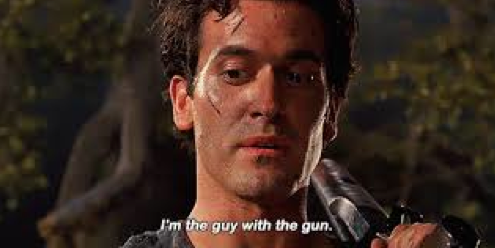
Everybody LIES
They can be small lies, “No, I wasn’t crying. Allergies.” They can be BIG lies, “I have no idea what happened to your father. I was playing poker with Jeb.” Fiction is one of the few places that LIES ARE GOOD. LIES ARE GOLD.
Fiction is like dating. If we tell our date our entire life story on Date #1? Mystery lost and good luck with Date #2.
When it comes to your characters, make them lie. Make them hide who they are. They need to slowly reveal the true self, and they will do everything to defend who they believe they are. Remember the inciting incident creates a personal extinction. The protagonist will want to return to the old way, even though it isn’t good for them.
Resist the urge to explain.
Feel free to write everything out in detail for your own use…but then HIDE that baby from the reader. BE A SECRET-KEEPER. Secrets rock. Secrets make FABULOUS fiction.
What are your thoughts? Questions? What are some great works of fiction that show a myriad of lies from small to catastrophic? Could you possibly be ruining your story tension by explaining too much?
Before we go, I want to give you a heads up especially if you are thinking on attending a conference.
I’m holding my ever-popular Your Story in a Sentence class. Can you tell what your book is about in ONE sentence? If you can’t? There might be a huge plot problem. This also helps if you are ever going to query or pitch an agent. The first ten signups get their log-line shredded by MOI for FREE.
Also speaking of FREE, I’d like to mention again the new class I am offering!
How and WHY are we using FREE!?
Making Money with FREE! As a bonus for this class, my friend Jack Patterson who’s so far sold over 150,000 books to come and teach us how to ROCK the newsletter. This is in excess of two hours of training and the recording (as always) comes with purchase.
I LOVE hearing from you!
To prove it and show my love, for the month of MARCH, everyone who leaves a comment I will put your name in a hat. If you comment and link back to my blog on your blog, you get your name in the hat twice. What do you win? The unvarnished truth from yours truly. I will pick a winner once a month and it will be a critique of the first 20 pages of your novel.
For those who need help building a platform and keeping it SIMPLE, pick up a copy of my latest social media/branding book Rise of the Machines—Human Authors in a Digital World on AMAZON, iBooks, or Nook.









